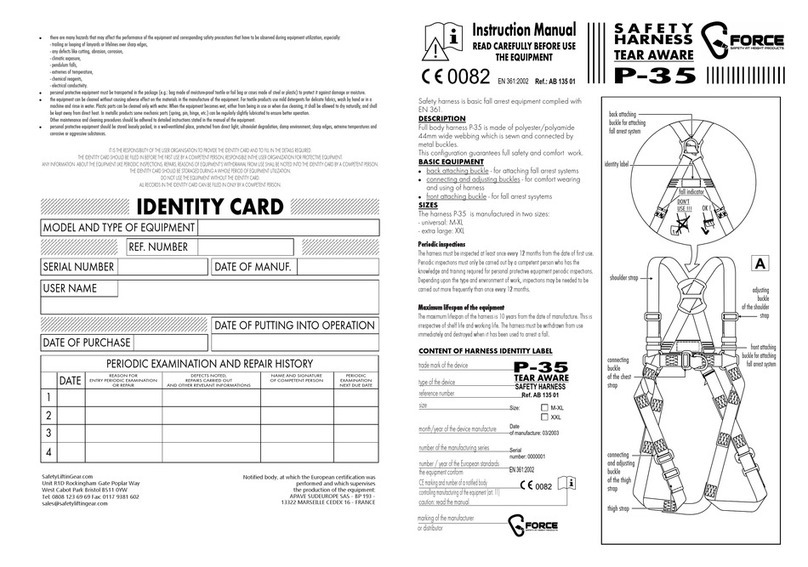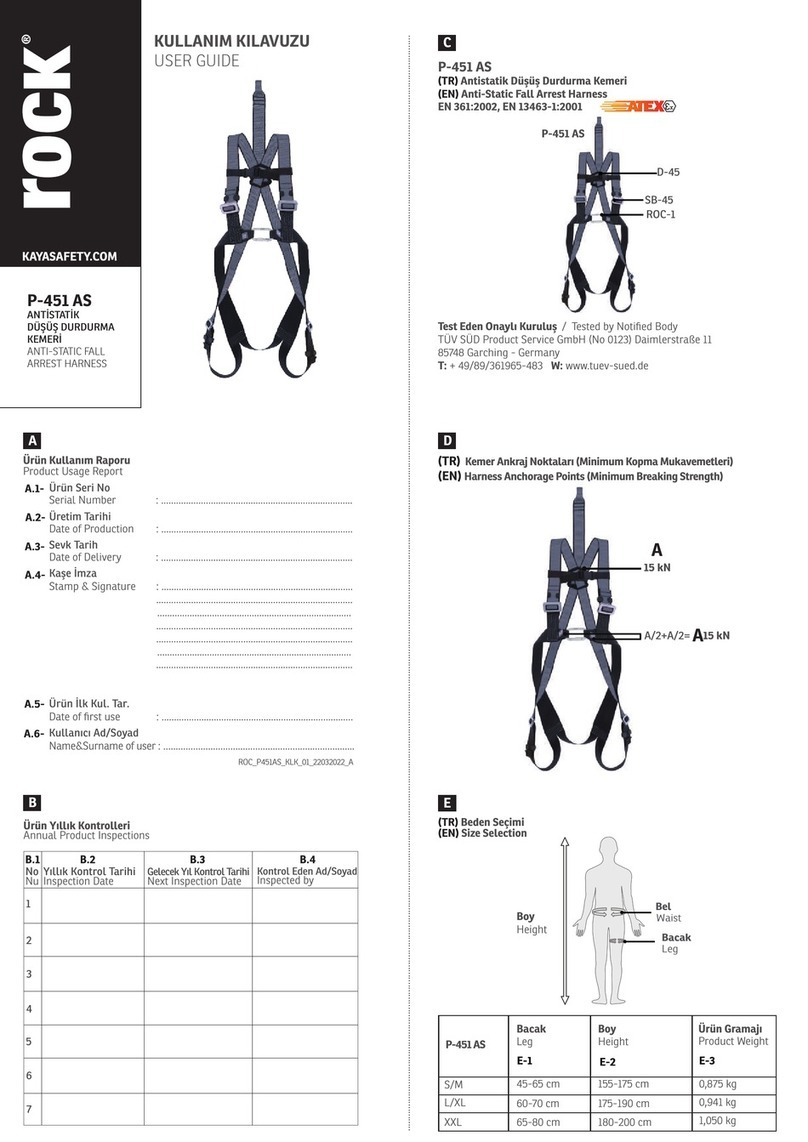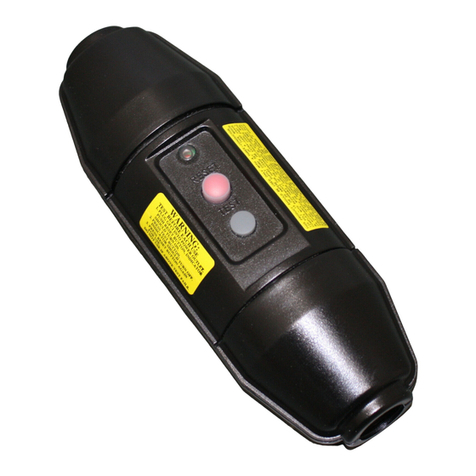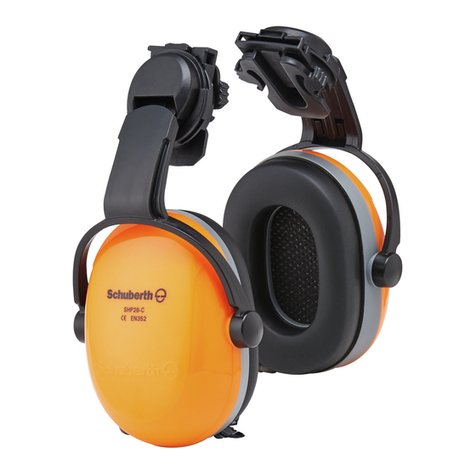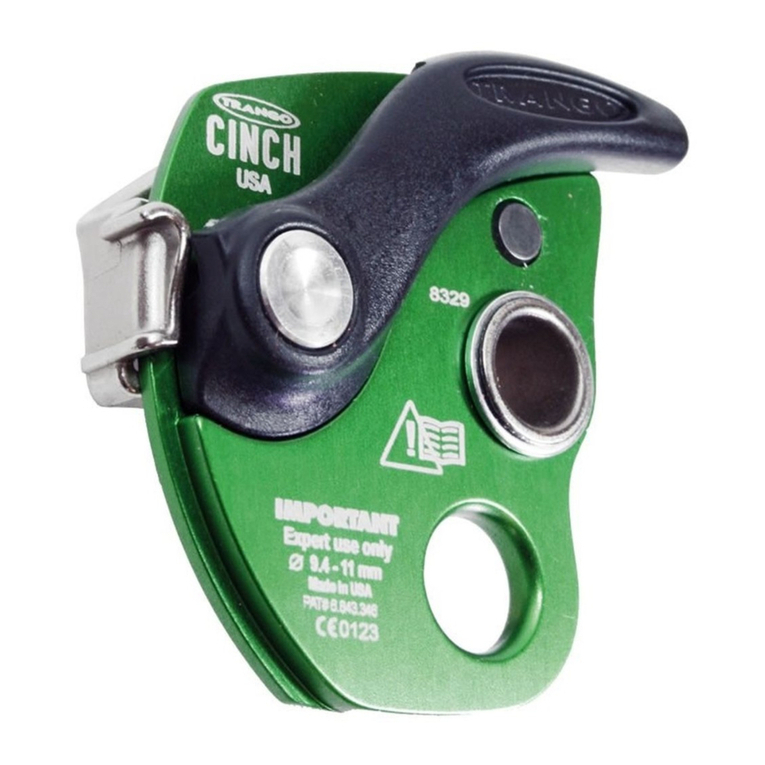
7
SE 40/125S2 ignition protected thruster assembly 5456-2 - 2018
A possible problem in sailboats or fast powerboats, is that they
get a drag from the back face of the tunnel, as this becomes a
“ at” area facing the water ow (Fig. 1).
This can also create problems with the thruster spinning (passive)
and making noise while sailing or driving the boat with water be-
ing pushed through the tunnel at high speed.
This can be solved in two di erent ways, depending on what is
possible or more easy to do.
1. The best solution which normally reduces the drag most, is to
make a recess in the hull at the back of the tunnel.
Thereby the back face is gone and about all the drag (Fig. 2).
The depth and shape of this recess will depend on the boat.
Basically you should not see the back face of the tunnel when
standing directly in front of the tunnel at the angle of the boats
centreline.
The angle up or down backwards of the insert in the hull, de-
pends on the hullshape, but normally it is angled slightly down
because of the water ow on this area of the hull.
2. The drag will also be reduced a lot, especially in fast power
boats, by making a de ector / spoiler in front of the tunnel.
This will push the water ow out from the hull so that most of it
passes by the back face of the tunnel (Fig. 3).
The shape and size of this de ector will depend on the hull
shape. Basically you should not see the back face of the tunnel
when standing directly in front of the tunnel at the angle of the
boats centreline.
The easiest way of making this is to let a part of the tunnel
stick out in the lower forward area of the hole, and use this as
a support to mould a soft curve / spoiler shape.
Remember to still round the tunnel ends as much as possible to
get optimum thruster performance and minimum noise.
More information on how to practially do this on pages 6.
Prevent drag from tunnel
EN Motstand forårsaket av tunnel
NO
Et mulig problem for seilbåter eller meget hurtiggående båter er
motstand i tunnelen. Aktre ende på tunnelen vil være en liten lod-
drett ate mot vannstrømmen som skaper uønsket motstand.
Denne aten kan også forårsake problemer med at vann føres
inn i tunnelen under seilas, eller kjøring i høy fart og får da propel-
len til å rotere, dette skaper uønsket støy.
Det er to mulige løsninger på problemet, avhengig av hva som er
enklest å få til på båten.
1. Den løsningen som vanligvis reduserer motstanden mest er å
lage en fordypning i skroget i aktre ende av tunnelåpningen.
Den loddrette aten vil da forsvinne og dermed motstanden.
Hovedregelen å følge er at bakkanten av tunnelen ikke skal
synes når man står rett foran båten og titter akterover langs
båten senterlinje. Dybden, utformingen og vinkling av fordyp-
ningen avhenger av båttypen, og hvordan vannet følger skro-
get, men de este båter vil være tjent med en fordypning som
vinkler lett nedover (Fig. 2).
2. Motstanden vil også reduseres av en spoiler i forkant av
tunnelen. Spoileren fører det meste av vannstrømmen rundt
og forbi tunnelen. Størrelsen og utformingen på spoileren
avhenger av båten. Hovedregelen er at bakkanten av tunnelen
ikke skal synes når man står rett foran båten og titter akterover
langs båten senterlinje. Den enkleste måten å lage spoileren
på er å la tunnelen stikke ut i forkant av tunnelen, og forme
spoileren opp mot den (Fig. 3).
Det er alltid viktig å avrunde tunnelåpningene mest mulig for å
motvirke støy og for å få mest mulig eff ekt av thrusteren.
Mer informasjon om dette på side 10.
12
SP 75 Ti / SP 95 Ti / SP 125 Ti
2.5.1- 2007
Formgebung der Tunnelenden
☺☺☺☺☺
�����
Abgerundete Tunnelenden erhöhen die Schubkraft und
reduzieren das Geräuschniveau.
Der Bereich Tunnelende / Außenseite des Rumpfes ist soweit
möglich abzurunden. Der optimale Wert für den Radius dieser
Rundung beträgt 10% des Tunneldurchmessers.
Vorteile gegenüber einer scharfen Tunnel / Rumpfverbindung sind:
1. Abgerundete Tunnelenden verhindern Turbulenzen / Kavitation,
wie sie an scharfenkantigen Tunnelenden auftreten. Damit
werden zwei negative Auswirkungen auf Schubkraft und
Geräuschentwicklung vermieden (Fig. 1 & 2).
- Turbulenz / Kavitation blockieren den äußeren Tunnelbereich.
Dadurch werden effektiver Tunneldurchmesser und Schub-
kraft reduziert.
- Die Turbulenz / Kavitation trifft auf den Propeller und reduziert
dessen Effektivität und führt zu zusätzl. Geräuschentwicklung.
2. Abrundungen ermöglichen, daß Wasser entlang der Rumpf-
außenseite angesaugt werden kann. Dadurch entsteht ein
Vakuum ("zusätzliche" Schubkraft"), das das Schiff seitwärts
bewegt (Fig. 3 & 4). Bei scharfkantigen Enden kann kein
Wasser entlang der Rumpfaußenseite angesaugt werden,
wodurch das benötigte Vakuum nicht zustande kommt.
Diese Schubkraft kann bei optimaler Installation bis zu 30-40%
der absoluten Schubkraft betragen.
NB ! Sidepower Propeller sind so ausgelegt, daß sie nicht
kavitieren, sodaß die Geräuschentwicklung aufgrund von
Kavitation durch die Tunnelinstallation bedingt ist.
NB ! Ist eine optimale Abrundung nicht möglich, so sind die
Tunnelenden soweit möglich abzurunden. Angeschrägte
Tunnel / Rumpfverbindungen sind zu einem gewissen Grad
ebenfalls mit ähnlich positiven Auswirkungen wie eine
Abrundung verbunden (siehe Seite 20, Fig. 1b & 1d).
Tunnel ends
Fig. 2
Fig. 4
Fig. 1
Fig. 3
R = 0,1 x D (10%)
R = 0,1 x D (10%)
D
Rounded tunnel ends will maximize thrust and minimize
noise.
We recommend rounding the tunnel connection to the hull-side as
much as possible.
The optimum rounding has a radius of 10% of the tunnels diameter.
Important advantages over sharp tunnel to hull connections are:
1. The rounded tunnel end will prevent creation of turbulence
cavitation that will come from a sharp tunnel end when water
passes by fast, thereby preventing a double negative impact on
the thrust and noise level (Fig. 1 & 2).
- The turbulence / cavitation blocks the outer area of the tunnel
and thereby reduces the effective tunnel diameter and thrust.
- The turbulence / cavitation hits the propeller and thereby reduce
the propellers performance and creates noise.
2. The curved tunnel end makes the thruster take water also from
along the hull-side, creating a vacuum that will suck the boat
sideways and thereby give additional thrust (Fig. 3 & 4).
With a sharp tunnel end, the thruster will be unable to take water
from along the hull-side, and you will not get the desired vacuum
and additional thrust. This “free” additional thrust can in optimal
installations be as much as 30 - 40% of the total thrust.
NB! A Sidepower thruster propeller does not cavitate at working
speed so that all cavitation and cavitation noise in the tunnel will
be caused by the tunnel installation.
NB! Even if it is not possible to make the perfect rounding, it is very
important to round the tunnel end as much as possible. A
angled tunnel to hull connection will also do much of the same
job as a rounded connection (see page 20, Fig. 1b & 1d).











